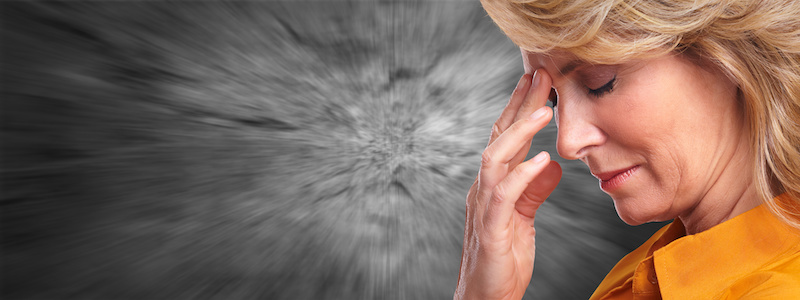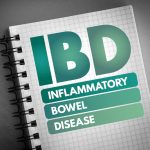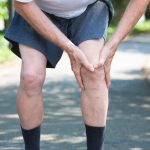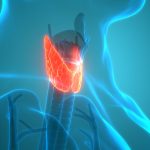One of the most debilitating symptoms of hormonal imbalance for women that I treat as a naturopath is hormonal headaches and migraines. To say that this condition disrupts the quality of life is an understatement.
Like with most conditions, triggers and causes are multi-faceted and it is important to understand the “perfect storm” of triggers for each unique woman.
First, what are Hormonal migraines?
Hormonal migraines, sometimes also called “menstrual migraines”, are headaches that are triggered by hormonal changes. These types of headaches are most likely to occur in the 2 days leading up to your period or in the first three days of your bleed when oestrogen levels are at their lowest. Others may experience hormonal migraines around ovulation when there is a spike in oestrogen levels. Hormonal migraines can also be common in women aged 40-55 during the perimenopausal period, because of the high (and fluctuating) levels of oestrogen at this time.
What Causes Hormonal Migraines?
Hormonal migraines are typically associated with oestrogen, either oestrogen dominance/ excess, or oestrogen withdrawal (sudden decline in oestrogen levels)
- Oestrogen dominance or oestrogen excess migraines typically occur around the time of ovulation
- Oestrogen withdrawal migraines typically occur just before or during your period. This type of migraine may still be due to an overall oestrogen dominance state, which may mean a more severe decline in oestrogen at the end of your cycle.
Oestrogen dominance or oestrogen excess can occur for a number of reasons, including:
- Your body is producing too much oestrogen, perhaps in response to a hormonal condition like PCOS
- Your body is not eliminating oestrogen effectively, perhaps because your liver is working suboptimally or is overburdened
- You are being exposed to xenoestrogens – synthetic oestrogen-like molecules that act as extremely strong oestrogen in the body. This estrogen dominance blog provides some wonderful information – Click Here to Read
- You are not producing enough progesterone, which is causing a high ratio of oestrogen to progesterone (relative oestrogen dominance). This might occur if there is an issue with ovulation
How Does Oestrogen Trigger Migraines?
High oestrogen levels trigger hormonal migraines by:
- Stimulating immune cells to produce higher than normal amounts of histamine and prostaglandins, which cause inflammation
- Causing rapid declines in oestrogen at the end of the menstrual cycle, which can lead to low serotonin and high glutamate. Glutamate is a neurotransmitter that has been linked to the pathophysiology of migraines. New research suggests it may be elevated glutamate levels acting on the brain that triggers migraines.
Other Causes of Hormonal Migraines:
Periods are not the only cause of hormonal migraines, however. This type of headache can also be caused by:
- The oral contraceptive pill, particularly during the placebo phase of the pill, where oestrogen levels drop
- Menopause – as normal hormone balance is disrupted, hormonal migraines can be triggered
- Pregnancy – particularly in the early stages of pregnancy when oestrogen levels sharply rise
Other triggers that can worsen or be the cause of your migraines:
As part of my thorough naturopathic investigation when identifying things that can impact migraines and headaches, it is important to remember that there are other types of headaches that should be considered and excluded. Tension headaches, sinus headaches and headaches from your body being misaligned could also be part of your unique picture.
Blood sugar imbalance: low blood glucose levels and high blood glucose levels can be a huge trigger. Cravings at that time of the month may be worsening your symptoms which is why I always support clients in managing this aspect. Excess sugar causes hormonal changes, due to cortisol, epinephrine and norepinephrine which change the behaviour of blood vessels in your brain.
Gut dysfunction: especially constipation can increase reabsorption of estrogen metabolites that can trigger hormonal headaches. Toxins that should be eliminated in bowel movements can also be reabsorbed when constipated. Nurturing digestion for healthy elimination is critical.
Liver Health: the liver plays a huge role in hormonal balance and toxin elimination, and this may need to be supported for some women.
Low iron levels: Iron deficiency anaemia can cause your brain to receive much less oxygen than it requires for optimal functioning so iron storage levels are important so that headaches or migraines are not triggered or made worse. When you bleed heavily during menstruation, this is an obvious clue.
Dehydration: your brain needs water to be hydrated and a simple objective of drinking more water, can make a huge difference.
Sinus headaches are also linked to migraines and the forms of headaches, and it is important to exclude the role of sinus issues and allergies as part of the picture.
Caffeine: many people are also sensitive to the effects of caffeine which can have a role in migraine and headaches.
Thyroid imbalance: Research has shown us that hypothyroidism (low thyroid function) is linked to more frequent and severe migraines and headaches which is why I always check levels.
I find from clinic experience that it is often the perfect storm for migraine sufferers as opposed to just one thing. Many factors can be linked to worsening hormonal headaches.
Naturopathic Treatment Strategies for Hormonal Migraines
Based on what is happening for each client, each strategy is tailored appropriately however some basic recommendations often include:
Dietary Strategies
Include Phytoestrogens in the Diet
A randomised, controlled trial found that the prophylactic use of phytoestrogens significantly reduced the incidence of menstrual migraines after as little as one month of use. Phytoestrogens are molecules found in many plant foods which can bind to oestrogen receptors in the body. Because phytoestrogens have only a very mild oestrogenic effect, they can help to reduce the effects of oestrogen excess by displacing excess oestrogen in the body without triggering symptoms. The excess oestrogen can then be metabolised by the liver and excreted, helping to bring levels back to normal.
Phytoestrogens can be found in a huge range of foods, including:
- Organic soy products, such as tofu and tempeh
- Ground flax seeds, pumpkin seeds, sesame seeds, sunflower seeds
- Chickpeas, mung beans
- Olives
- Buckwheat, whole grains
Increase Fibre Intake
If oestrogen excess is driving your hormonal migraines, upping your fibre intake can help by improving the body’s ability to bind up and remove excess oestrogen from the body. The main way oestrogen is excreted is through the bowels, so it is vital that we are opening our bowels daily to prevent oestrogen from being reabsorbed before it can be excreted. To prevent symptoms of bloating and flatulence, increase your fibre slowly – you can start by adding just a teaspoon of freshly ground flaxseed to your morning smoothie or to a glass of water. Fibre is found abundantly in plant foods – vegetables, fruits, legumes and grains. Include a wide variety of plant foods in your diet and aim to have plant foods with most or all meals.
Drink 2 Litres of (Filtered) Water Every Day
As with fibre, it’s important that you are drinking enough water to maintain healthy, regular bowel movements. 2 litres per day (more on hot days and during physical activity) is a good guide for most people. Choose filtered water if possible, as this will help to reduce the amount of impurities the liver needs to process, leaving it free to concentrate on metabolising oestrogen and other metabolic wastes.
Thoroughly scrub and wash Fruits and Vegetables before Consumption
To avoid pesticides and other harmful chemicals on your fruits and vegetables, it is best to choose organic produce when possible. However, regardless of whether you have organic or not, it is important to thoroughly scrub and rinse your fruits and vegetables before consumption to remove surface toxins and reduce the liver’s workload. To clean fruits and vegetables thoroughly, soak hard-skinned products for 10-15 minutes before scrubbing. Fill the kitchen sink with warm water and add 1/3 cup apple cider vinegar. Alternatively, Dr Bronner’s soap can be diluted and used as a fruit and vegetable wash.
Don’t Store or Heat Food in Plastic
Plastic is made of a litany of chemicals, some of which are known to disrupt hormone balance, such as BPA, which can worsen oestrogen dominance. Plastic food storage containers and cling-wrap can leak these harmful chemicals into your food, especially if you are heating your food in the container or are placing your food into the container when it is still hot. Whilst many plastic food containers advertise as being BPA-free, the majority of them still contain other hormone-disrupting chemicals aside from BPA. Choose glass or ceramic containers to store food in and always reheat foods on the stove. If you don’t want to purchase a whole new set of expensive glass food containers, recycled jars from other foods are a great option! Pasta, pickles, coconut oil, and the like all come in sturdy glass jars that can be readily washed and reused to store food in again and again.
Other tips for safe food preparation:
- Swap plastic cooking utensils with wooden, stainless steel, or silicone types
- Use beeswax wraps as an alternative to cling-wrap
- Choose fresh or frozen fruits and vegetables and dried legumes over canned goods where possible.
- Use a glass or ceramic reusable coffee cup instead of takeaway cups
- Avoid non-stick cooking pans – swap for cast-iron, stainless steel, or ceramic cookware. Always immediately discard Teflon or non-stick cookware that shows any signs of damage
Lifestyle Strategies
Exercise Daily
When we are being physically active, our lymphatic system is able to work 2-3 times more efficiently compared to when we are at rest, helping to move metabolic wastes like excess oestrogen to the liver for metabolism and excretion. Physical activity is also important for healthy bowel movements. One of the easiest gentle physical activities is of course walking, and there are plenty of ways to increase your daily activity by walking more Try parking your care a little further away from work and walking the rest of the way or meet up with friends for walking dates on the weekend. In addition to walking, it’s important to get some more vigorous exercise in as well. This could include team sports, running, cycling, or even aerobics or dancing classes. Not only will these activities promote healthy lung function, but they also improve detoxification by increasing the amount you sweat.
Supplements
Again, this is unique for each person based on triggers and may include:
Vitamin B2 (Riboflavin)
Vitamin B2 can act as a prophylactic, helping to reduce the incidence and severity of hormonal migraines. Treatment typically needs to be for 1-3 months before benefit kicks in. This vitamin helps to prevent migraines by stabilising serotonin levels. A recent review and meta-analysis concluded that high-dose supplementation of vitamin B2 for 3 months is effective in reducing the frequency and severity of migraines.
Omega 3 Fatty Acids
Omega 3 fatty acids are powerful anti-inflammatory agents and have been shown to reduce the duration of migraines. Omega 3 fatty acids are found in fish and other seafoods, as well as in flaxseeds and hemp seeds. Supplements can also be useful but be sure to use a supplement prescribed by your naturopath, as many over the counter fish oil supplements contain poor quality and even rancid oils. Vegan options are available too and are made with algal oil.
Vitamin D
Studies into vitamin D status of migraine sufferers show that between 45-100% of people who experience migraines have a vitamin D deficiency. This is particularly relevant in Australia, where vitamin D deficiency or insufficiency is relatively common. Studies have also found the supplementing vitamin D can help to reduce the frequency of migraines.
Magnesium
This is another nutrient where deficiency is linked to migraines. Magnesium protects brain cells from glutamate, helps to improve serotonin function, calms blood vessels and reduces inflammation. Magnesium supplements vary wildly in quality and bioavailability, so it is best to speak with your naturopath about the best options for you. Magnesium can also be absorbed via the skin through Epsom salts in the bath, which can be a great, gentle option for increasing your magnesium levels.
Herbal Medicines
There are many wonderful herbal medicines that can help with hormonal migraines. The best herbs for you will depend on your specific presentation and triggers, as well as any other health conditions you may be experiencing. Below are just a few examples of herbs that may be beneficial.
Feverfew
Feverfew is a powerhouse herb when it comes to preventing migraines and has been used in the treatment and prevention of migraines for centuries. This herb is best taken as a daily prophylactic to prevent the onset of migraines, rather than being administered only when migraines begin.
Turmeric
Turmeric is not only a powerful antioxidant – it is also a liver-supporting herb and an anti-inflammatory and has been shown to be useful in managing migraines. Because of it’s liver-boosting properties, it is particularly good with hormonal migraines, as it can help to improve the body’s clearance of excess oestrogen.
Other herbal medicines may be used for the following:
- Herbs for improving your stress response
- Herbs for reducing anxiety and nervous tension
- Herbs for balancing oestrogen levels and progesterone levels
- Herbs for liver support
- Herbs for supporting better blood glucose balance
Migraines and headaches are a complex condition to navigate. If you seek a thorough naturopathic investigation to reduce the impact that migraines are having on your quality of life, please book an appointment here under the contact tab for an initial consultation or fact-finding call.
References
Briden, L. (2022). Natural treatment of menstrual migraines. https://www.larabriden.com/birth-control-cause-headaches-migraines/
Brighten, J. (2017). 20 natural remedies for hormonal headaches & migraines. https://drbrighten.com/16-natural-remedies-hormonal-headaches/
Brighten, J. (2019). Menstrual migraine relief. https://drbrighten.com/menstrual-migraine-relief/
Burke, B. E., Olson, R. D., & Cusack, B. J. (2002). Randomized, controlled trial of phytoestrogen in the prophylactic treatment of menstrual migraine. Biomedicine & Pharmacotherapy, 56(6), 283–288.
Chen, Y.-S., Lee, H.-F., Tsai, C.-H., Hsu, Y.-Y., Fang, Ch.-J., Chen, C.-J., Hung, Y.-H., & Hu, F.-W. (2022). Effect of vitamin B2 supplementation on migraine prophylaxis: A systematic review and meta-analysis. Nutritional Neuroscience, 25(9).
Chhater, S., Karal, R., & Kumar, B. (2018). Review on migraine: Pathophysiology and treatment. American Journal of Biomedical Research, 6(1), 20–24.
Ghorbani, Z., Togha, M., Rafiee, P., Ahmadi, Z. S., & Magham, R. R. (2019). Vitamin D in migraine headache: A comprehensive review on literature. Neurological Sciences, 40.
Maghsoumi-Norouzabad, L., Mansoori, A., Abed, R., & Shishehbor, F. (2018). Effects of omega-3 fatty acids on the frequency, severity, and duration of migraine attacks: A systematic review and meta-analysis of randomized controlled trials. Nutritional Neuroscience, 21(9).
Nattagh-Eshtivani, E., Sani, M. A., Dahri, M., Ghalichi, F., Ghavami, A., Arjang, P., & Tarighat-Esfanjani, A. (2018). The role of nutrients in the pathogenesis and treatment of migraine headaches: Review. Biomedicine & Pharmacotherapy, 102, 317–325.
NHS. (2021). Hormone headaches. https://www.nhs.uk/conditions/hormone-headaches/#:~:text=Many%20women%20experience%20headaches%20caused,tend%20to%20be%20particularly%20severe










